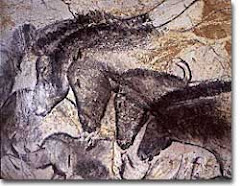
LOOK WHAT I FOUND IN FLICKR. THIS IS SOMETHING I WAS LOOKING FOR,AGES AGO; A NOT VERY WELL KNOWN EGYPTIAN QUEEN. AND THERE IS ALSO A REAL TEXT ABOUT HER.
Ahhotep I ("Peace of the Moon"), lived circa 1590-1530 BCE (Second Intermediate and New Kingdom), was an important historical figure a member of the Seventeenth Dynasty, and is often regarded as the matrilineal founder of the Eighteenth Dynasty. She was a Queen of Egypt, a successful military commander (especially against the invading Hyksos), and ruled a re-united Egypt as regent for at least one of her sons. The grave goods found buried with her at Thebes included three "golden flies of valour" medals (yes, they're insect-fly shaped: image. No, I don't know why unless there was a visiting time traveller planting the inspirations for 20th century European aesthetic movements...), which were only awarded for outstanding military service to Egypt, and ceremonial daggers, and axes. Her son, Ahmose I, erected a stela in her honour in a temple of Amun-Re which says (partial quote):
"She [Ahhotep] is the one who has accomplished the rites and taken care of Egypt... She [Ahhotep] has looked after her [Egypt's] soldiers, she [Ahhotep] has guarded her [Egypt], she [Ahhotep] has brought back her [Egypt's] fugitives and collected together her [Egypt's] deserters, she [Ahhotep] has pacified Upper Egypt and expelled her [Egypt's] rebels."All of which strongly implies Ahhotep personally led her troops into battle.


















